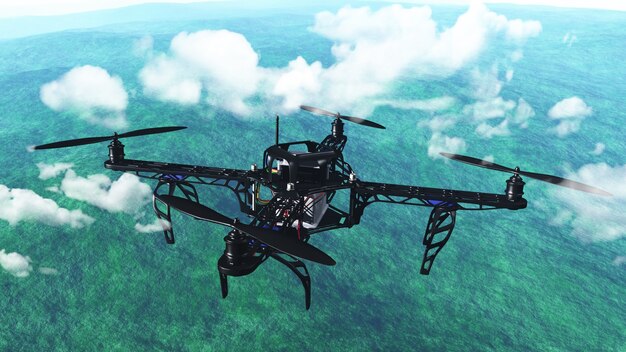
Sponsored article
The integration of artificial intelligence (AI) into drone detection technology is setting new benchmarks in security and surveillance. By harnessing the power of AI algorithms, drone detection systems are becoming more sophisticated, capable of identifying and neutralizing threats with unparalleled precision. In this article, we delve into the transformative role AI plays in enhancing these technologies, examining the current advancements and exploring the potential for future innovations that promise to redefine security standards.
The integration of AI in drone detection technology marks a significant leap forward, offering innovations and advancements that enhance the efficacy and accuracy of these systems. Artificial intelligence algorithms are now critical in recognizing the unique patterns of drone communication, increasing the precision with which systems can identify and differentiate drone signals from other noise in the electromagnetic spectrum. This technological progression enables faster and more reliable detection, crucial for applications that demand prompt response and intervention. With AI’s machine learning capabilities, detection systems can adapt to new drone data, continuously improving their ability to identify even the latest models on the market.
Additionally, AI enables advanced real-time monitoring capabilities, allowing for immediate recognition and tracking of drone activities. By leveraging AI, systems can better detect RF signals and pinpoint the location of drones and their operators, which is essential for both security and privacy concerns. AI-driven drone detection technology also supports multi-directional and swarm attack detection, ensuring robust defense mechanisms are in place against potential threats. This dynamic approach to drone security, facilitated by artificial intelligence, represents a transformative development in safeguarding sensitive environments and enhancing overall situational awareness. With a focus on comprehensive solutions, AI continues to pave the way for innovative advancements in the field.
Machine learning, a pivotal branch of artificial intelligence, significantly enhances security measures in drone detection by employing sophisticated AI algorithms. These algorithms meticulously analyze vast streams of data to discern patterns that signify potential threats. As drones proliferate in both commercial and recreational spheres, the capability to instantly identify unusual drone activity becomes crucial. AI-powered systems excel at processing real-time data, enabling timely threat detection and response. These systems transform traditional surveillance by providing insights into behavior patterns that may indicate security breaches or unauthorized drone usage.
With machine learning at the core, drone detection technology can predict and mitigate potential risks more effectively. The integration of these intelligent systems offers a proactive approach to threat management, enabling better response strategies. Key benefits include:
These advancements underscore the essential role of AI algorithms in bolstering security protocols and ensuring a robust defense against emerging drone-related challenges.
The future of drone detection is poised for transformation as AI integration becomes a cornerstone of technological evolution in this field. As unmanned aerial vehicles gain popularity across various industries, the demand for advanced drone detection systems has never been higher. AI-driven security measures promise a sophisticated approach to monitoring and identifying drones, offering unparalleled accuracy and efficiency. By harnessing AI, these systems can adapt to the ever-changing landscape of drone technology, predicting and countering unauthorized usage in real-time. This evolution is set to revolutionize how sensitive locations such as airports, public events, and even private properties handle the challenges posed by rogue drones.
With AI integration at the helm, drone detection systems will benefit from machine learning algorithms capable of distinguishing between benign and potentially threatening UAV activities. This enables tailored security measures that can preemptively address risks, ensuring heightened safety no matter the environment. As technological evolution continues to advance, AI-driven drone detection will not only enhance operational security but also pave the way for new applications and industry standards. The future is bright for those embracing this innovative fusion of AI and drone detection technology, as it promises to redefine the boundaries of security and surveillance.